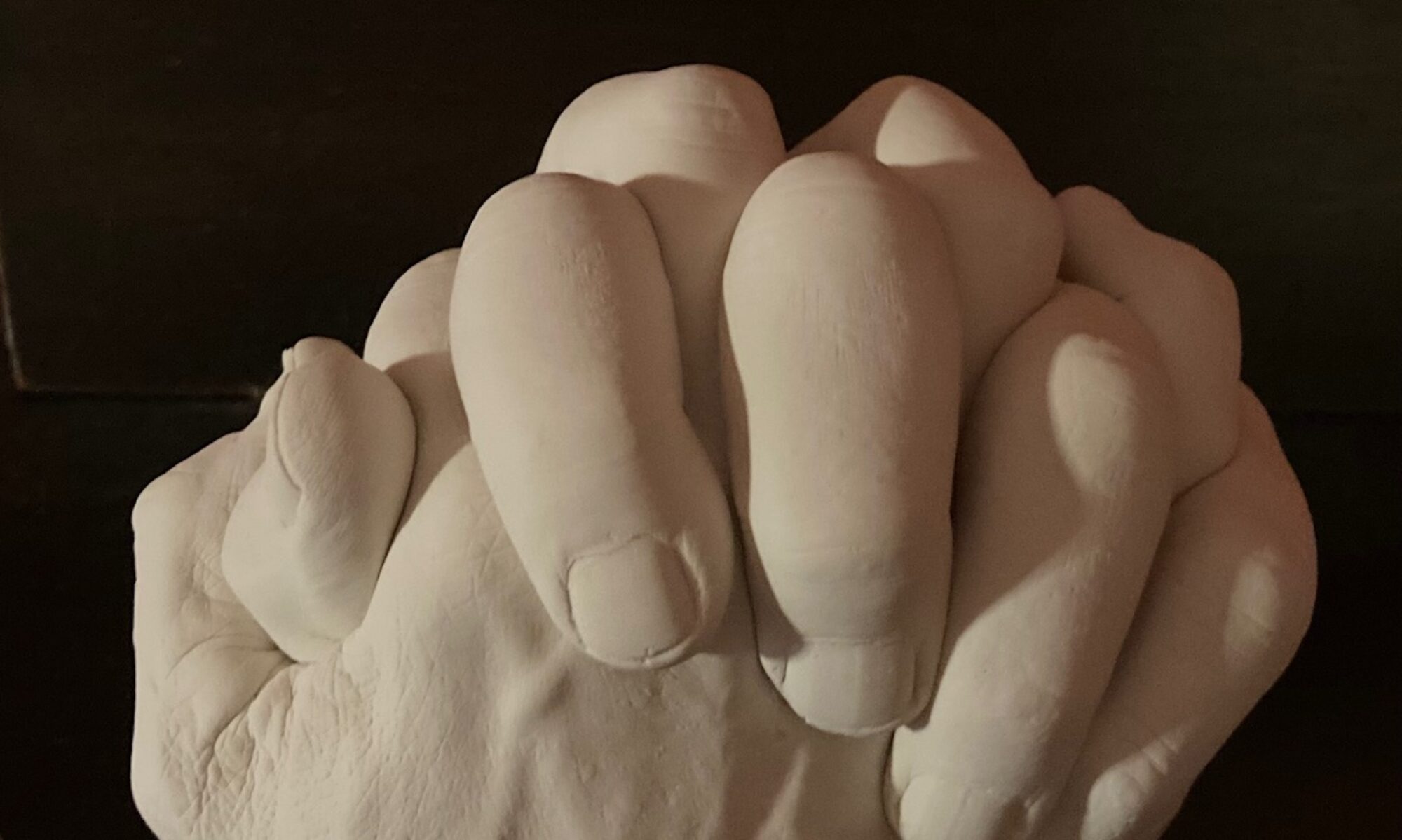UNIT 1: Assignment A Crop and Collage
Step 1: In-class make two experimental abstract works to collage from, using black and white acrylic paint on 20 x 26 white paper. Painted one sheet entirely black, allowed to dry. Mixed a variety of grey values, made a range of marks, textures, and shapes on the white and the black sheet.
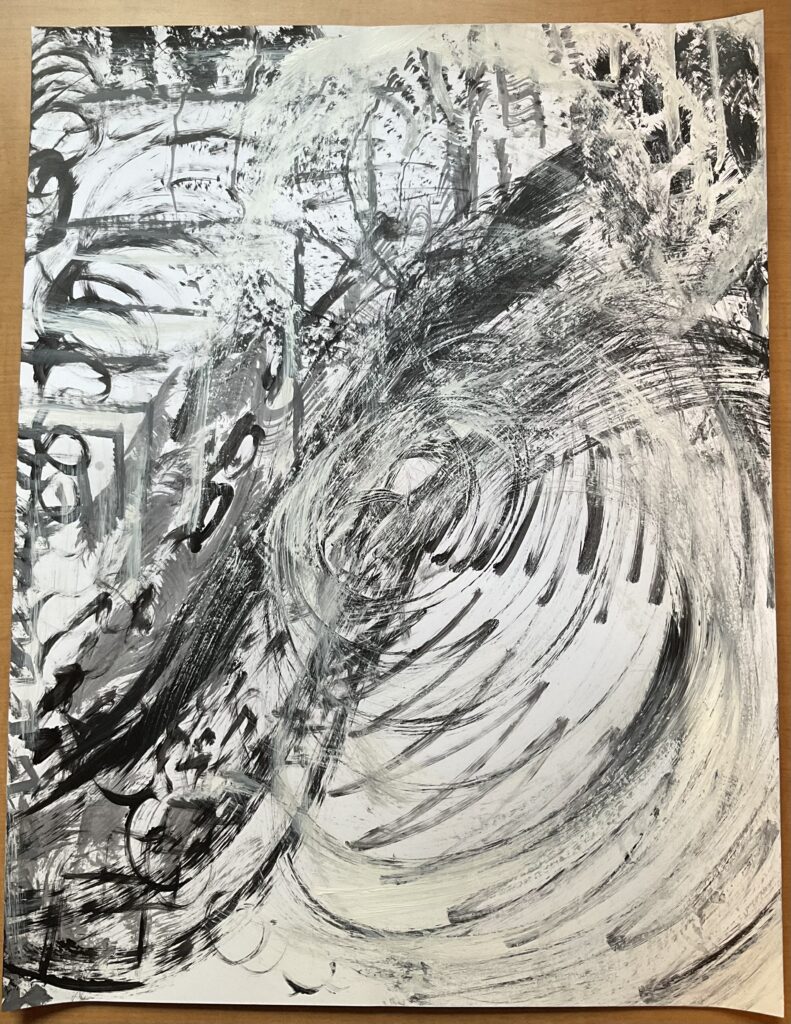
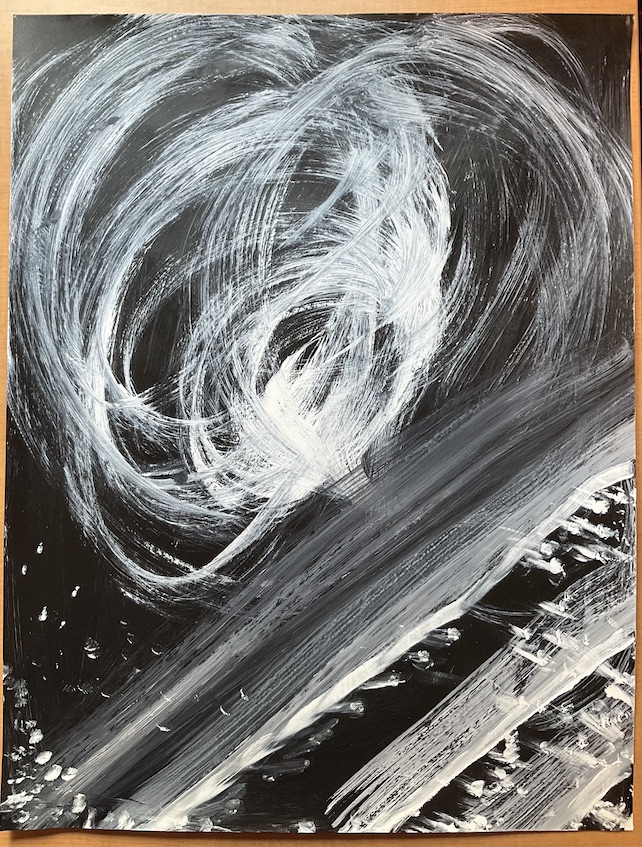
Step 2: Create two cropped details. At home, I made frames of a few different sizes and shapes to test run cropping ideas before settling on rectangles approx 6 by 9. After cutting those out I tried several arrangements. See the process below:
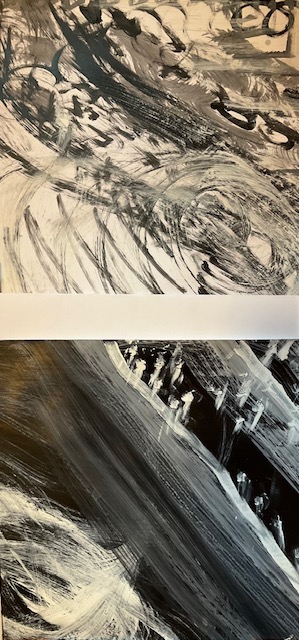




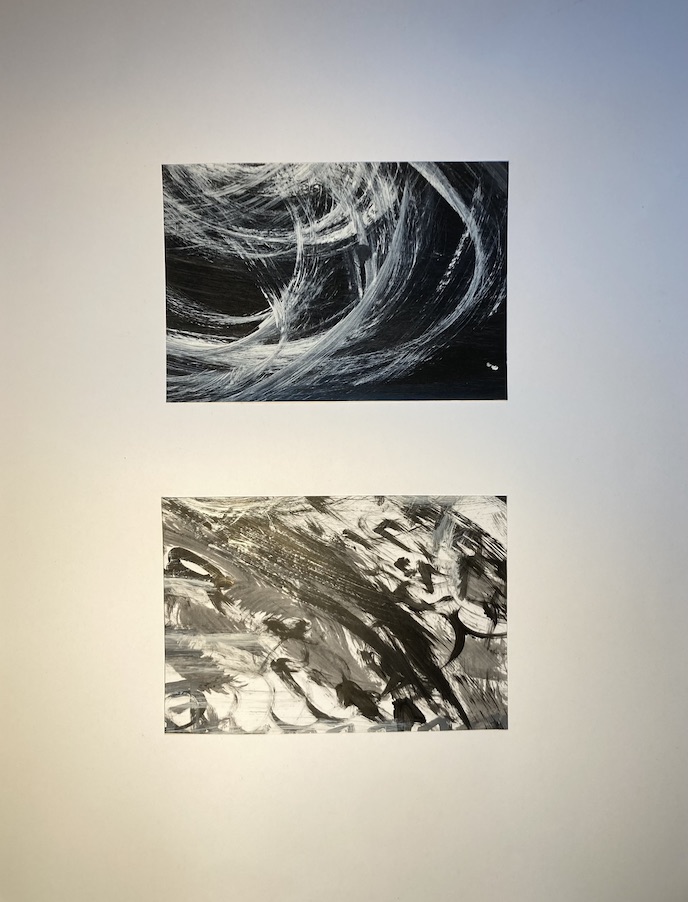
Step 3: Create one abstract collage from scraps of the original paintings.
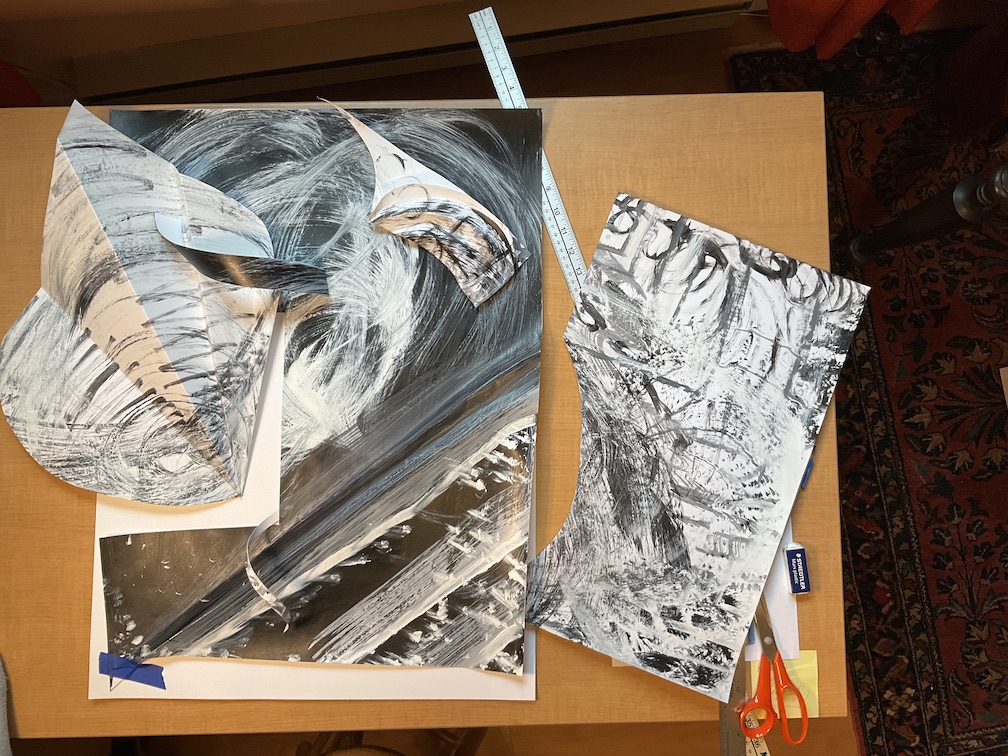
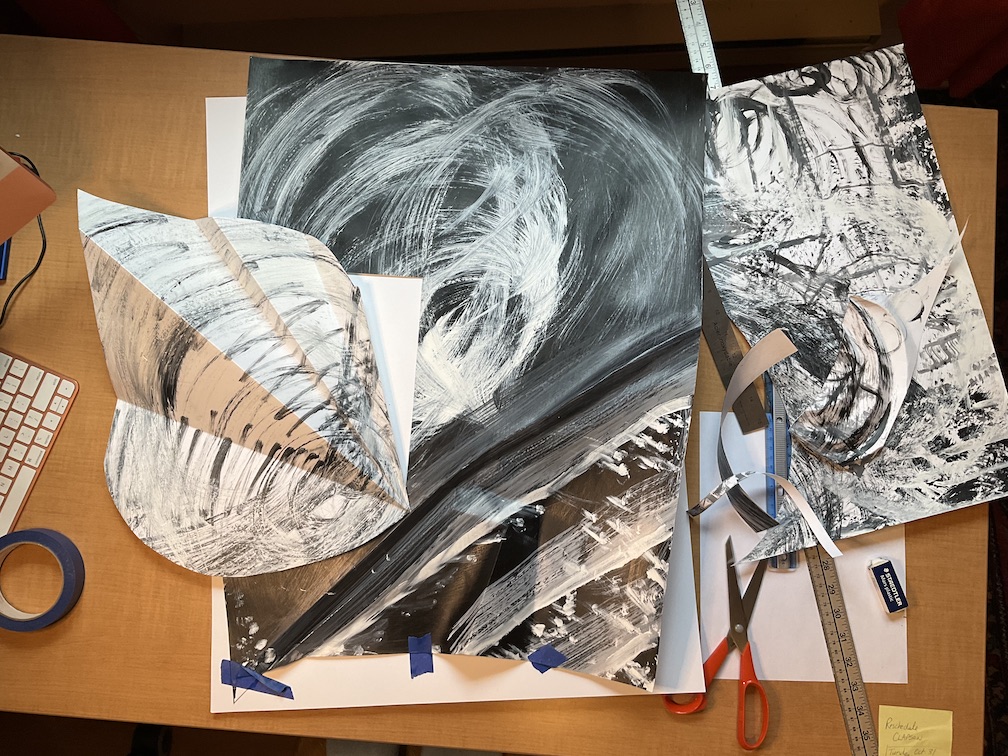
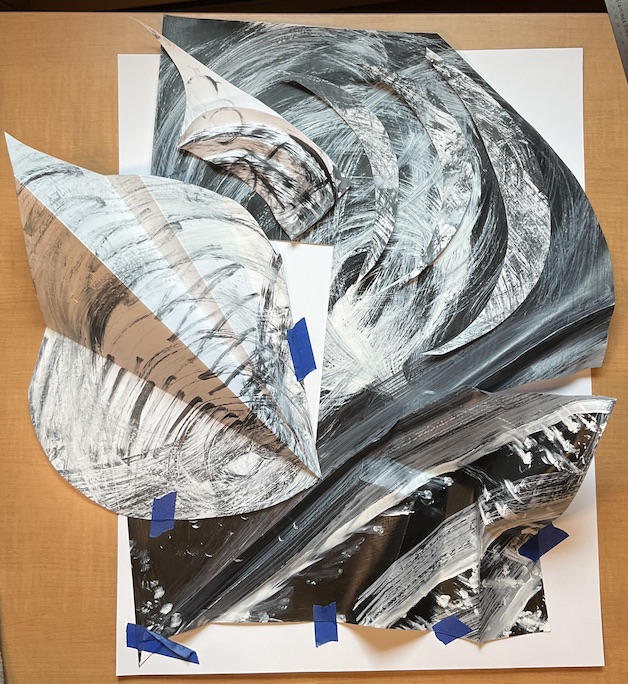
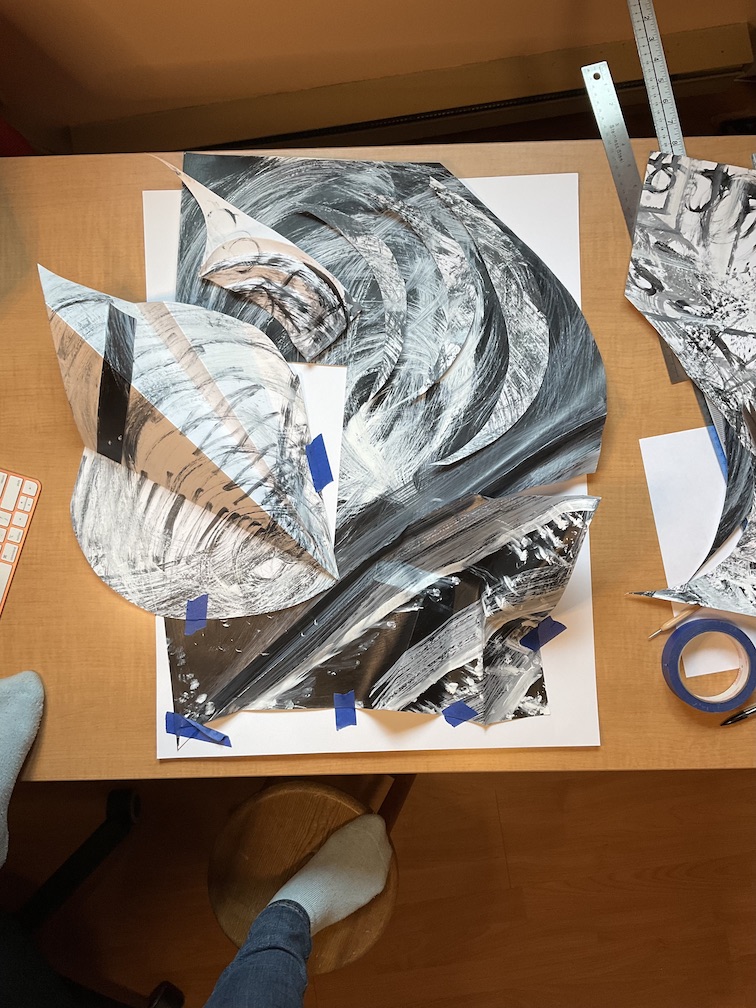
Just before taking work to class for informal critique, I added another white triangle shape — similarly shaped to the one in the centre of the piece, but this one horizontally oriented, traversing the 3 crescent shapes. I never took a photo of that version — during the informal critique with the class, I confessed it was a late-minute addition and I was not at all sure about it — when I removed it for the others’ comments and ideas, it seemed that everyone thought it was better without, including me. So, the work was finalized as the image below… Another comment during critique was to reconsider the upper left area, perhaps removing some/all of the white “horn” that extends off the smaller curved shape… food for thought.
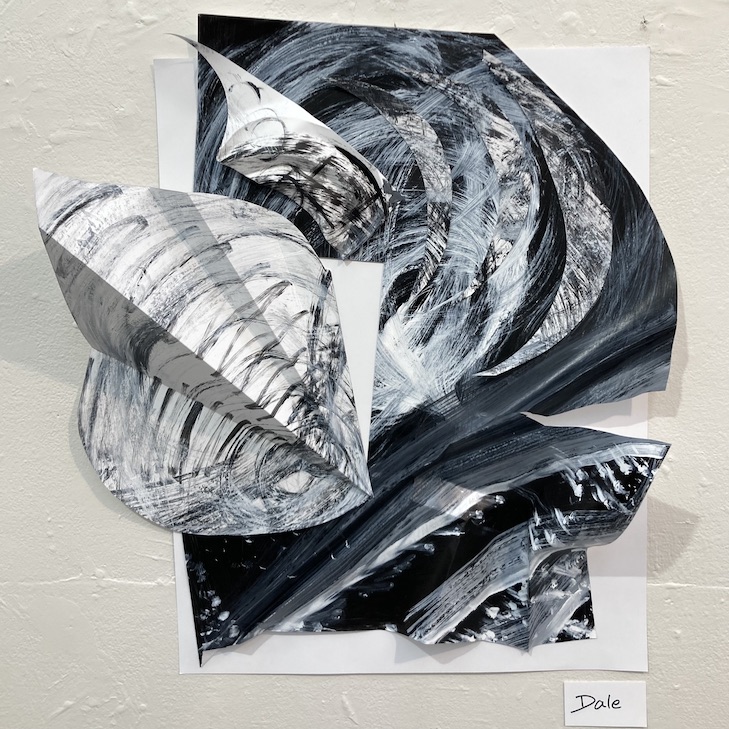
UNIT 1 Assignment B: Grey Scale. **will submit the hard copy of this item to the instructor as well as posting it here.

UNIT 1 Assignment C: Artist Research
Unit-1-Artist-Research.-DGrahamUNIT 1 Assignment D: Self Portrait. — ideation and trials
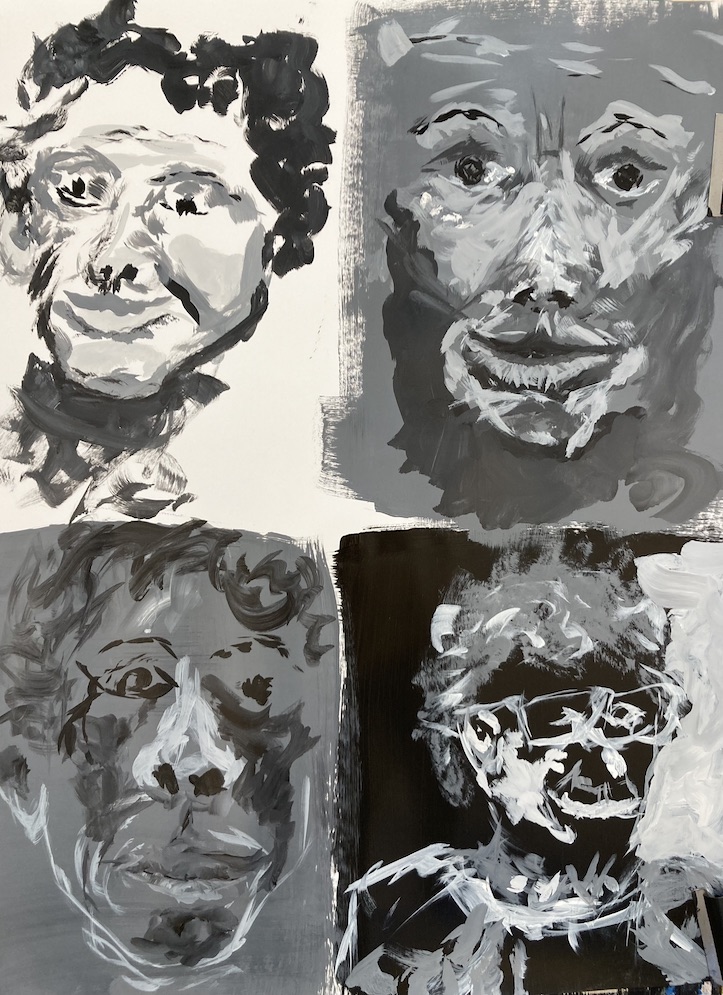
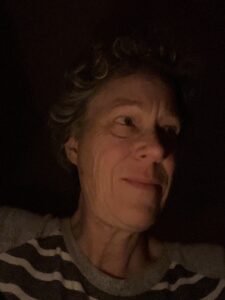
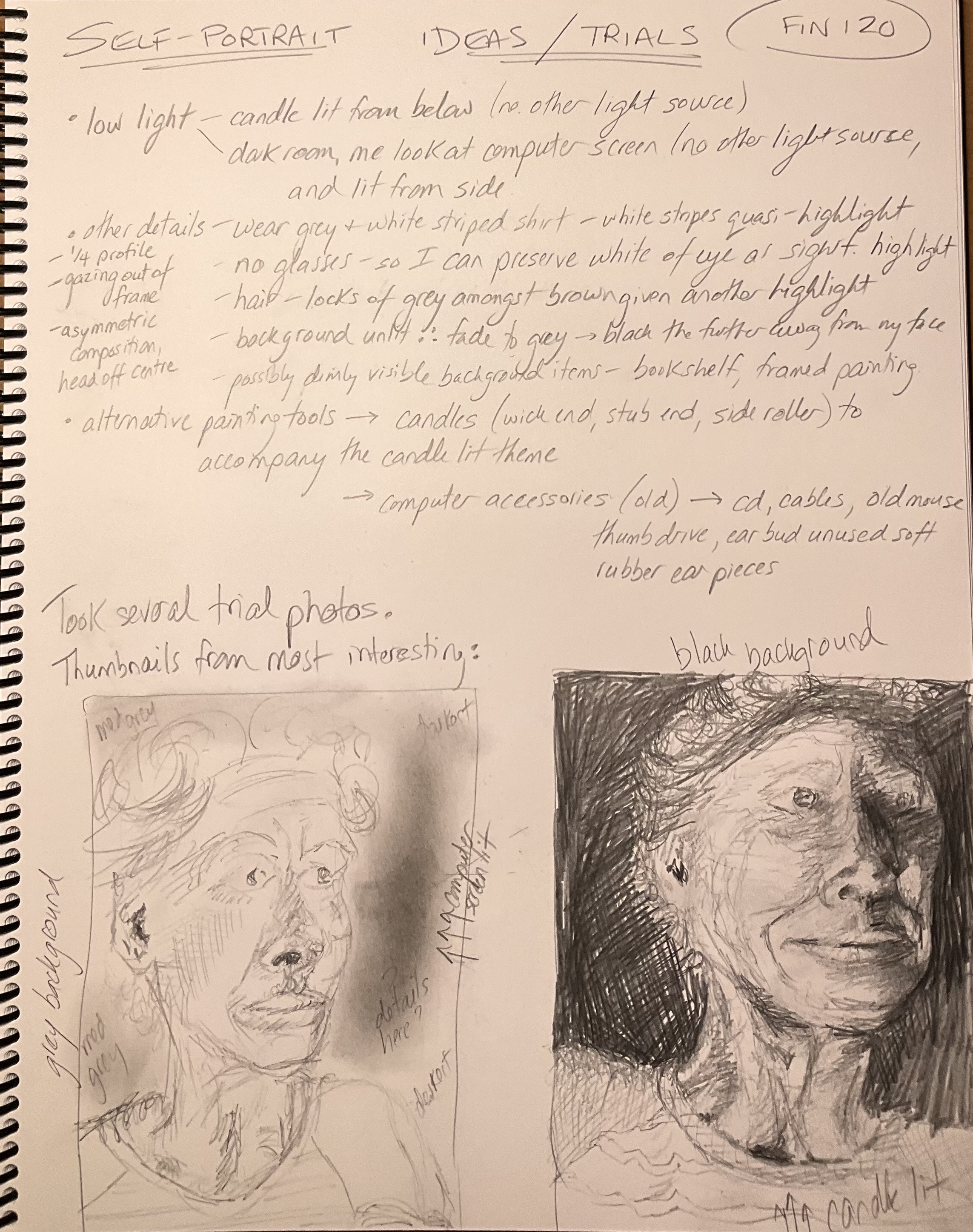
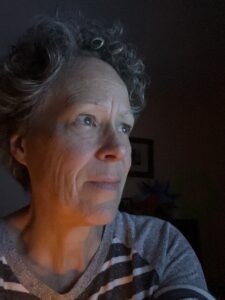
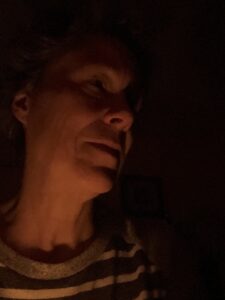
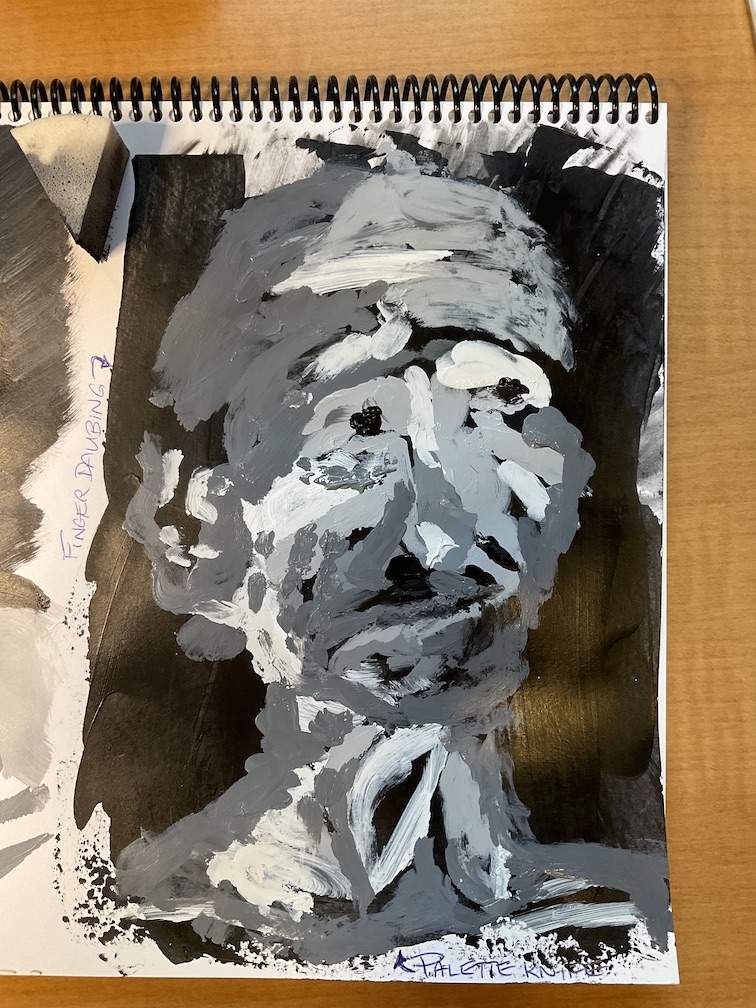
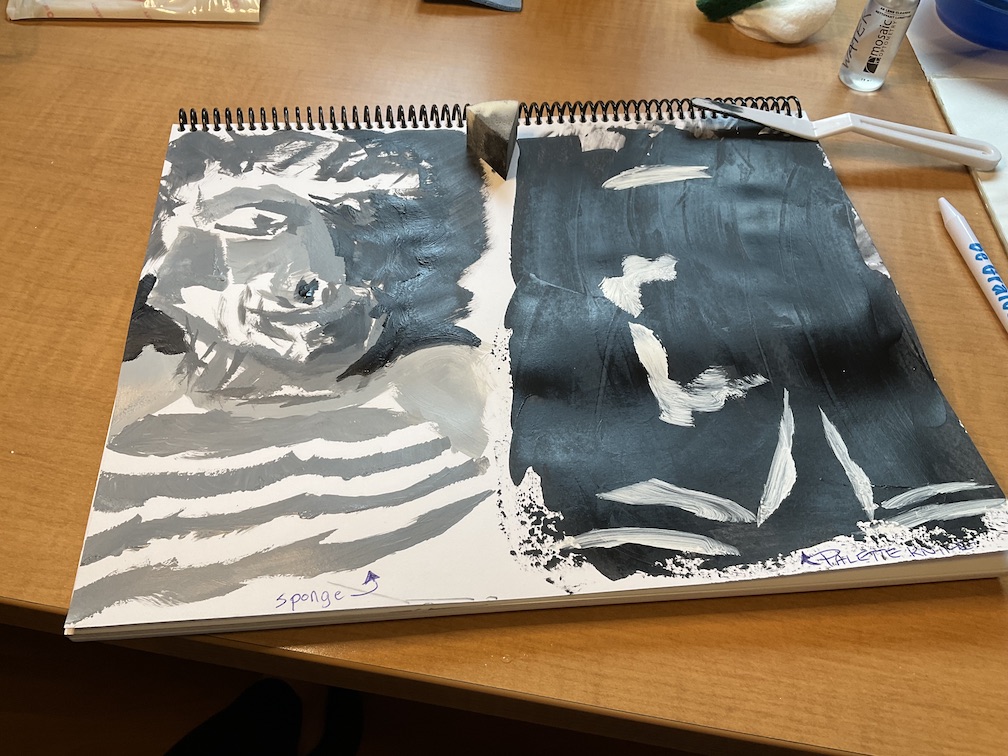
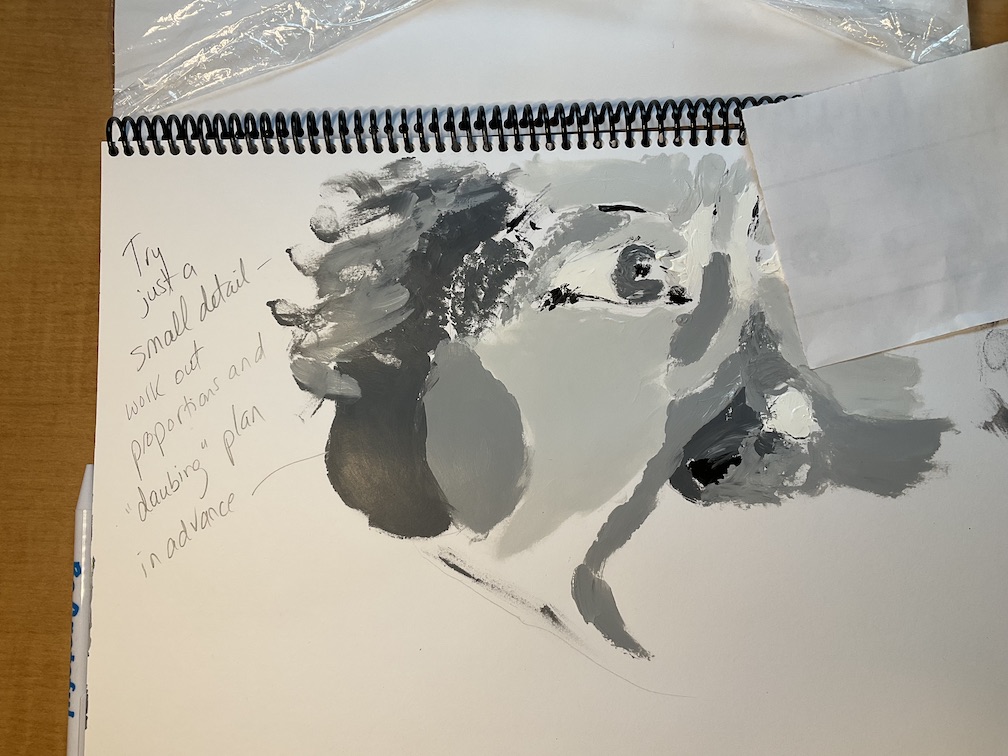
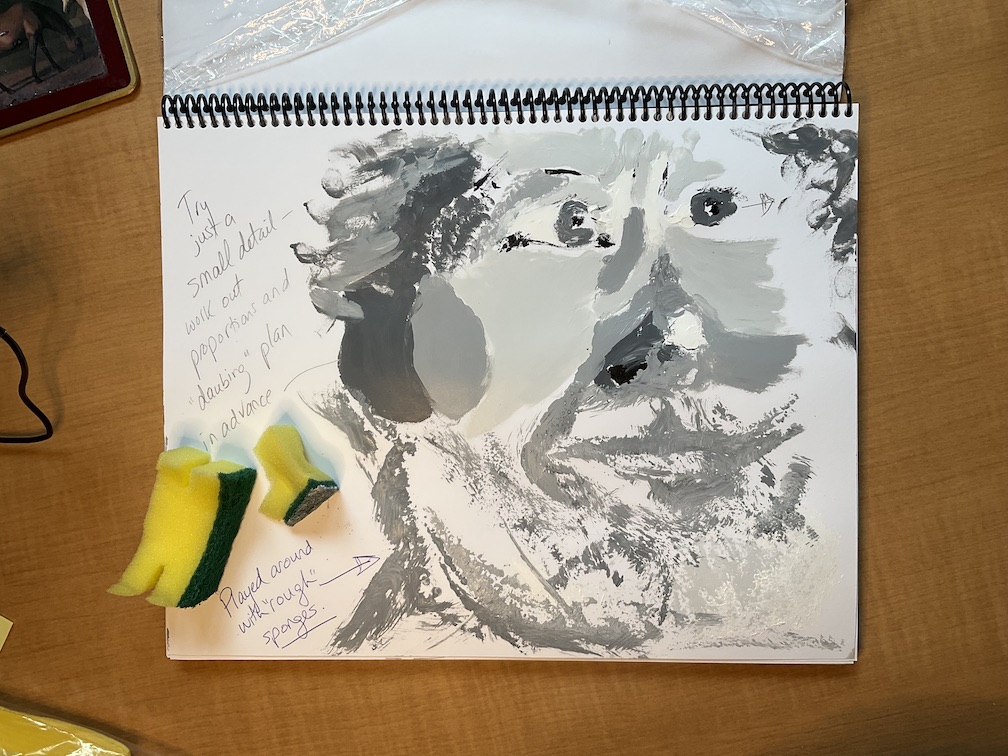
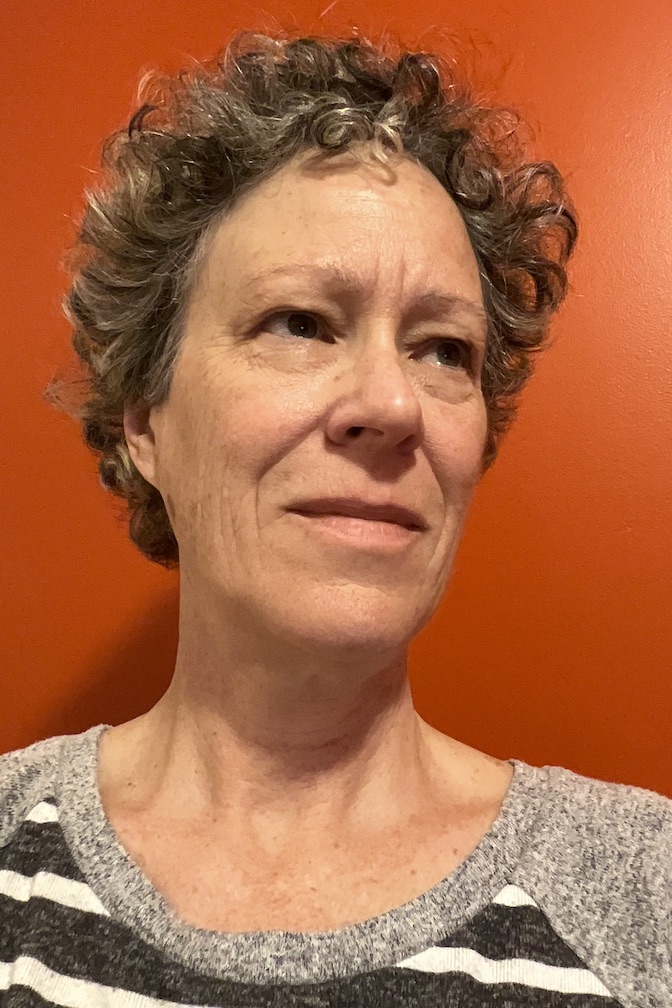
Self-portrait in process:
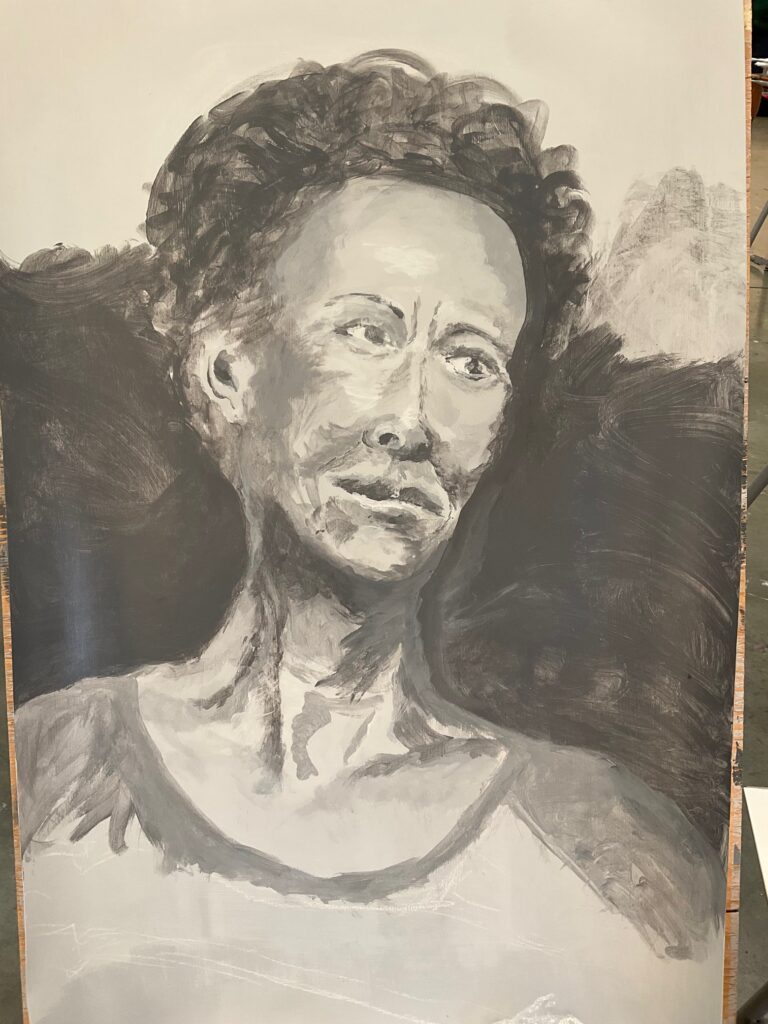



General Info picked up during class critique: consider using horizontal paint strokes for background, to set up a contrast with a vertically-oriented portrait subject (especially if using a landscape format for a portrait, with correspondingly more background involved). Consider that painting is about shape, versus drawing that is about line. If there are areas in your painting that you’ve rendered as lines, try breaking the lines up into constituent shapes, remove shapes / sections within the lines.
Feedback specific to my painting from class critique: my figure has a candid, relaxed feeling. The viewer picks up a narrative in the painting. Positive comments about the hair depiction, the interacting shapes in the hair. Shadows under the chin, highlights forehead and lips and nose, and the shapes of the collarbones are strengths. Areas for improvement – add form/value to the figure’s left shoulder, address the relatively glassy right eye, make it more similar to the left eye.
My own feedback, several days post-critique — pleased with my composition, the shape and coloration of the negative spaces, and some of the ways I have implied form by blends and shifts in value. Key things I’d like to improve next time: 1) better proportions — shorter neck, larger space nose to lip, shorter nose and mid-section of face/cheeks, larger eyes. Achieve this with more chalk sketching at the outset and repeat/check it as I go along; and 2) less abrupt value shifts in shadows under nose, left eye and left clavicle. Support this in part by finding a way to preview the painting in good lighting and at much greater distance than I have at home, a day or two ahead of finishing it, to allow time to review and adjust.
